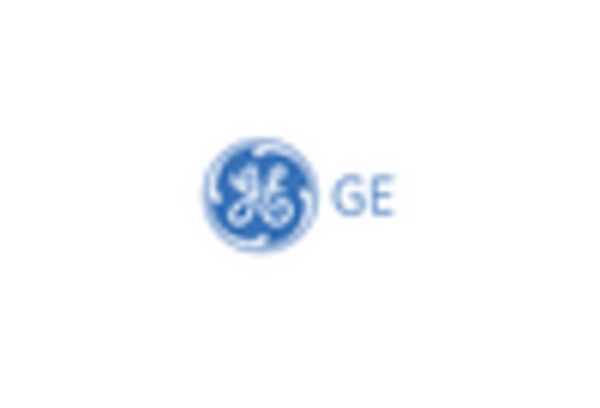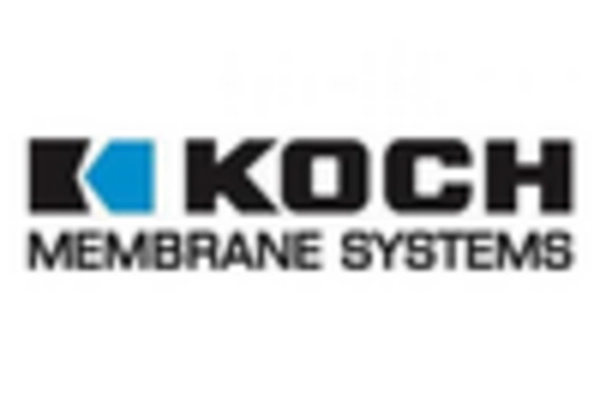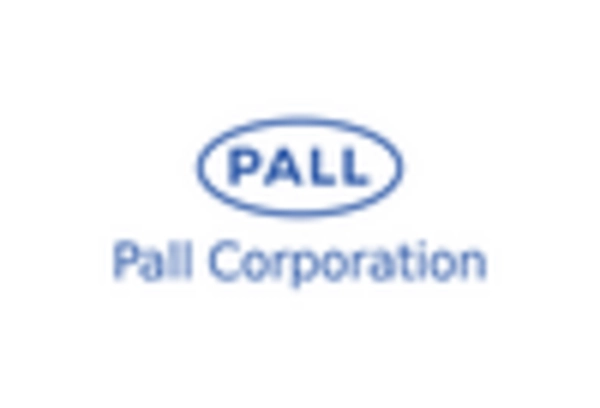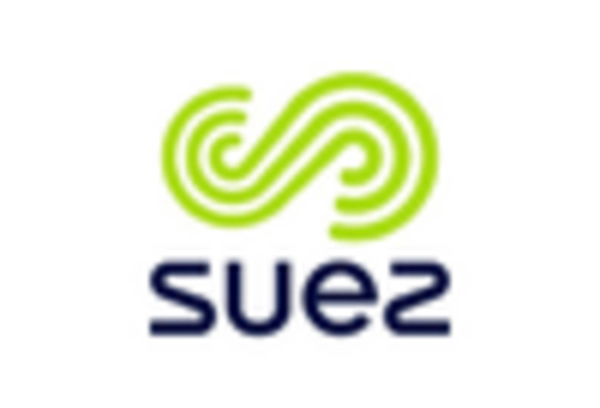Rising Demand for Clean Water
The increasing global population and urbanization have led to a heightened demand for clean water, which is a primary driver for the Ultrafiltration Market. As water scarcity becomes a pressing issue, municipalities and industries are seeking efficient water treatment solutions. Ultrafiltration technology, known for its ability to remove contaminants and pathogens, is gaining traction. According to recent estimates, the market for ultrafiltration systems is projected to grow at a compound annual growth rate of approximately 10% over the next five years. This growth is indicative of the urgent need for advanced filtration technologies to ensure safe drinking water and meet regulatory standards. The Ultrafiltration Market is thus positioned to benefit from this trend, as it offers effective solutions to address water quality challenges.
Regulatory Support and Environmental Concerns
Regulatory support and growing environmental concerns are key drivers of the Ultrafiltration Market. Governments worldwide are implementing stringent regulations aimed at improving water quality and reducing pollution. These regulations often require industries to adopt advanced water treatment technologies, including ultrafiltration systems, to comply with environmental standards. The increasing awareness of environmental sustainability among consumers and businesses further amplifies this trend. As a result, the ultrafiltration market is witnessing a surge in demand, with estimates suggesting a potential market growth of 9% over the next few years. This regulatory landscape not only encourages the adoption of ultrafiltration technologies but also fosters innovation within the industry, as companies strive to meet evolving standards and consumer expectations.
Industrial Applications and Wastewater Treatment
The Ultrafiltration Market is significantly driven by its applications in various industrial sectors, particularly in wastewater treatment. Industries such as food and beverage, pharmaceuticals, and textiles are increasingly adopting ultrafiltration systems to treat wastewater and recycle water. This trend is partly due to stringent environmental regulations that mandate the reduction of pollutants in effluents. The ultrafiltration process not only enhances water quality but also allows for the recovery of valuable resources from wastewater. Recent data suggests that the industrial segment accounts for a substantial share of the ultrafiltration market, with projections indicating a growth rate of around 8% annually. This underscores the importance of ultrafiltration technology in promoting sustainable industrial practices and reducing environmental impact.
Technological Advancements in Filtration Systems
Technological advancements in filtration systems are propelling the Ultrafiltration Market forward. Innovations in membrane materials and designs have enhanced the efficiency and effectiveness of ultrafiltration processes. For instance, the development of hollow fiber membranes has improved the performance of ultrafiltration systems, allowing for higher flux rates and better fouling resistance. These advancements not only increase the operational efficiency of ultrafiltration systems but also reduce maintenance costs, making them more attractive to end-users. As industries seek to optimize their water treatment processes, the demand for advanced ultrafiltration technologies is expected to rise. Market analysts predict that the introduction of next-generation filtration technologies could lead to a market expansion of approximately 12% in the coming years, highlighting the critical role of innovation in the Ultrafiltration Market.
Growing Adoption in Healthcare and Pharmaceuticals
The healthcare and pharmaceutical sectors are increasingly recognizing the benefits of ultrafiltration technology, which serves as a significant driver for the Ultrafiltration Market. In these sectors, ultrafiltration is utilized for the purification of water and the concentration of various solutions, ensuring the highest quality standards are met. The demand for sterile and high-purity water in pharmaceutical manufacturing processes is particularly critical, as it directly impacts product quality and safety. Recent market analyses indicate that the healthcare segment is expected to grow at a rate of approximately 11% annually, driven by the rising need for advanced filtration solutions. This trend highlights the essential role of ultrafiltration technology in maintaining compliance with stringent regulatory requirements and enhancing operational efficiency within the healthcare and pharmaceutical industries.

















Leave a Comment